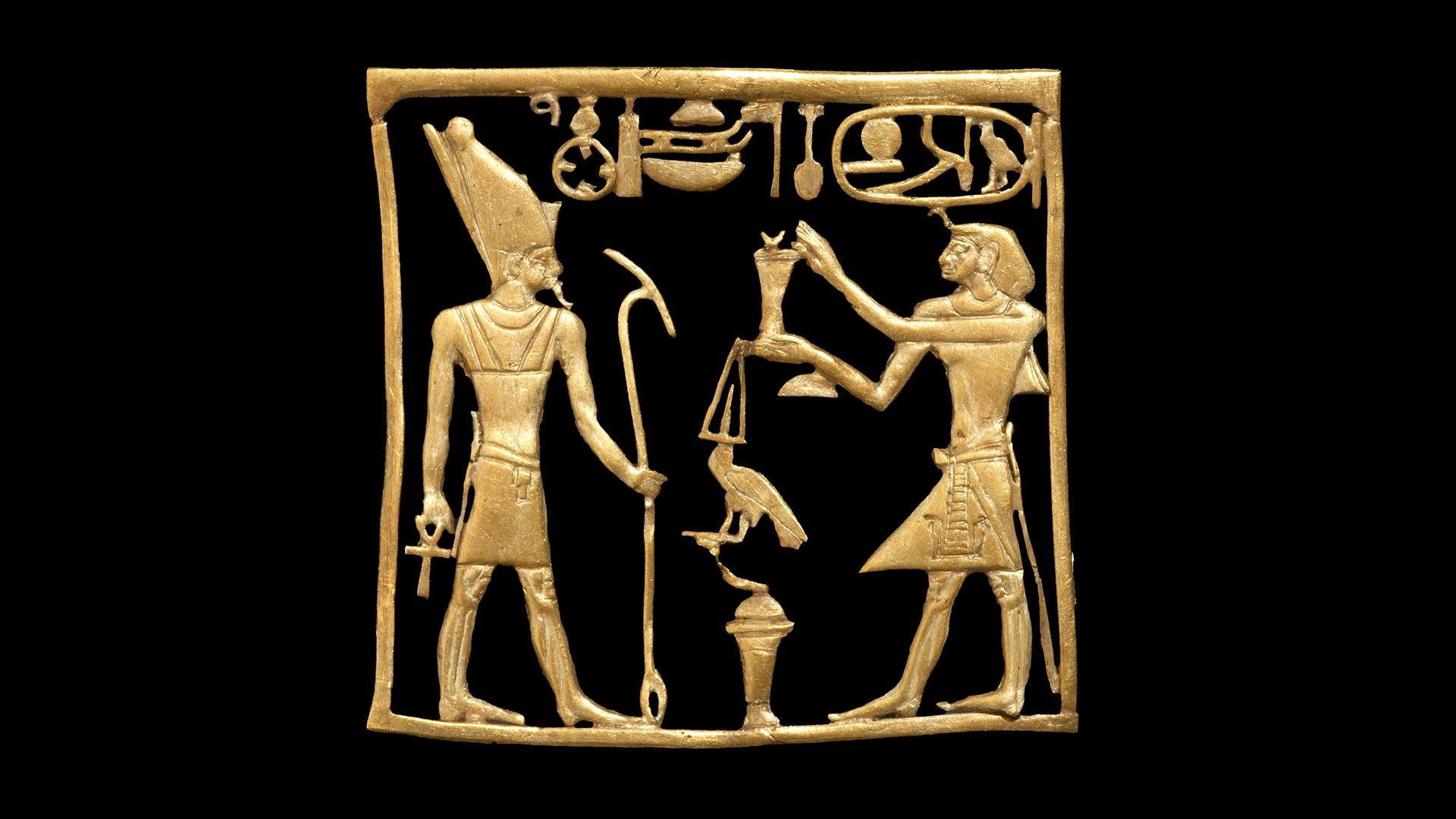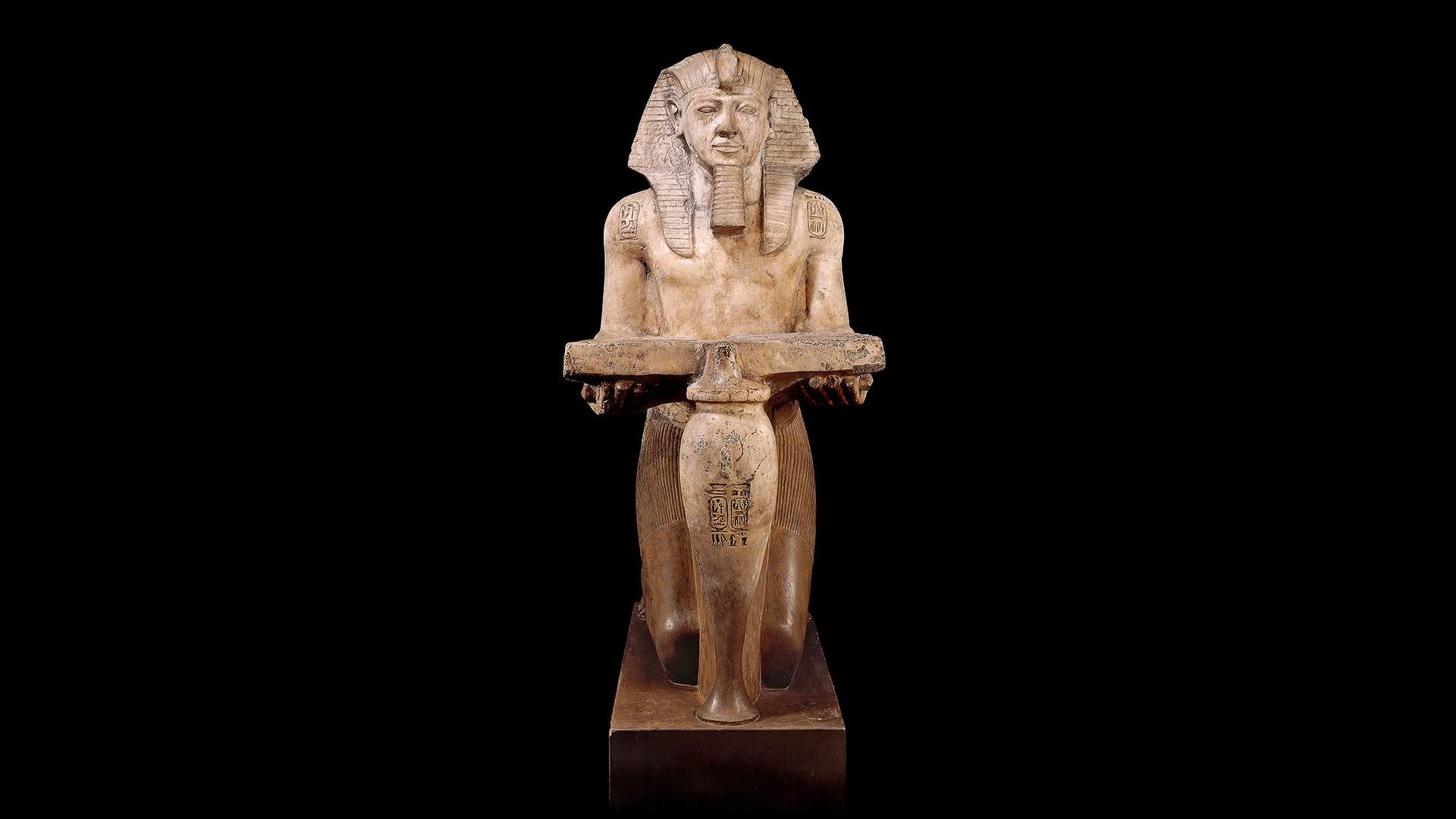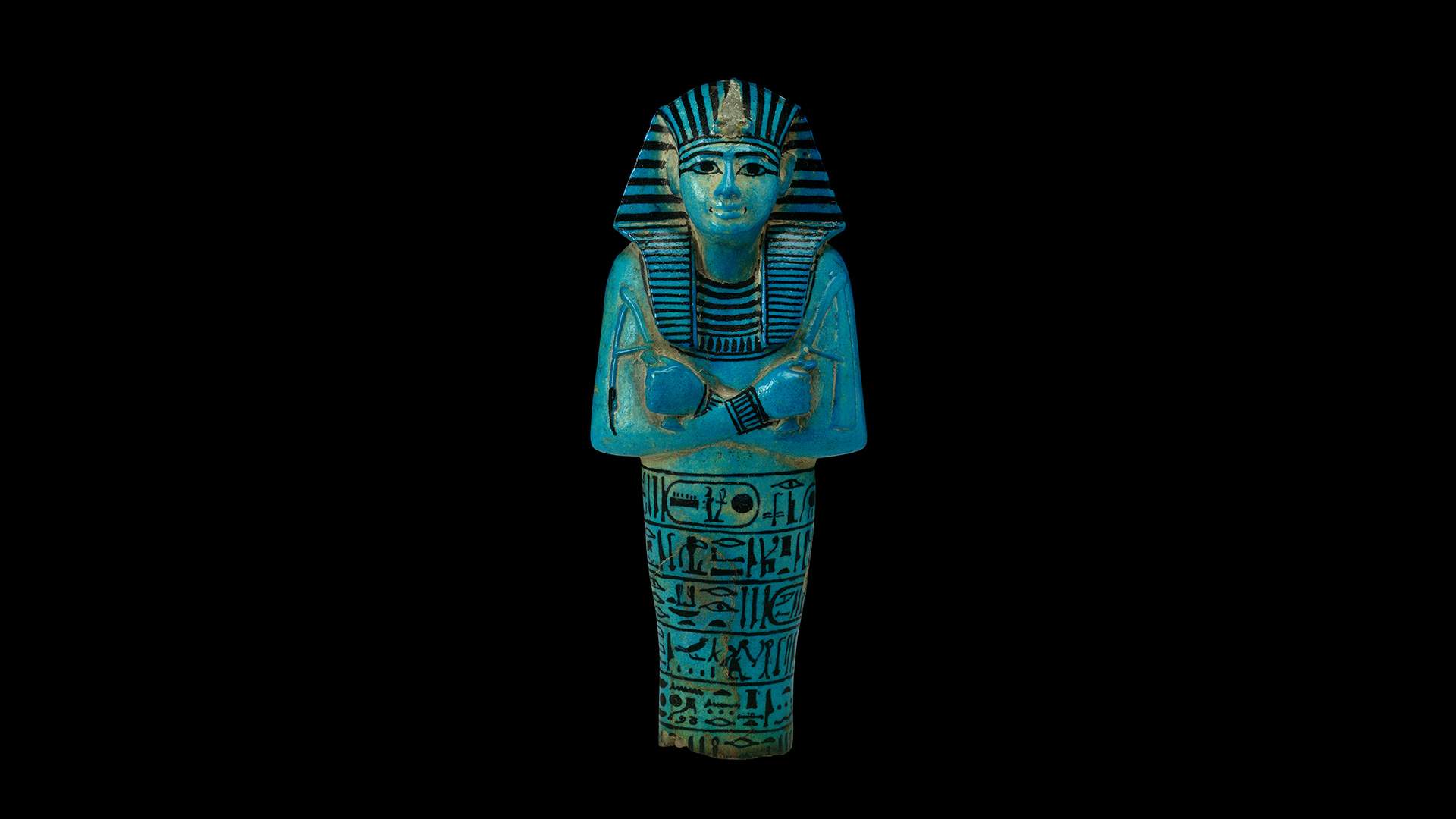Pharaoh
This blockbuster NGV exhibition is bringing 500-plus ancient Egyptian items to Melbourne in 2024.
Overview
Everyone remembers studying ancient Egyptian history in school. Pyramids, pharaohs, boy kings, mummification: they aren't easily forgotten. Your next chance to explore this chapter of the past will get you walking through works from centuries ago, covering the time of Tutankhamun, Ramses II, Nefertari, Khufu and even Alexander the Great, all as part of an impressive exhibition at Melbourne's NGV International called Pharaoh.
Meet the venue's midyear blockbuster for 2024, which will fall into Victoria's annual Melbourne Winter Masterpieces season. Following on from 2023's Pierre Bonnard: Designed by India Mahdavi, this middle-of-the-calendar spectacular will run from Friday, June 14–Sunday, October 6 and feature items from the British Museum. That loan is quite significant, too, with Pharaoh including the venue's biggest-ever borrowing of ancient Egyptian jewellery, as well as pieces that previously haven't been shown.
In total, more than 500 works will be on display as the NGV peers back at Egypt from the 1st Dynasty to the Roman era — so, from around 3000 BCE to the 4th century CE. Expect to see plenty of gleaming artefacts given that focus on ancient Egyptian jewellery. The exhibition will also span coffins and other funerary items, as well as examples of architecture spanning tombs, temples, and also massive monuments and sculptures.

Plaque of Amenemhat IV, Probably Byblos, Lebanon, 12th Dynasty, reign of Amenemhat IV, about 1808- 1799 BC, Gold, H 2.9 cm, W 3.1 cm, D 0.1 cm, © The Trustees of the British Museum.
Among the specific highlights, a hefty wall from a 2.5-metre-high, three-metre-wide limestone wall from a mastaba tomb dating back to the Old Kingdom is one of them — complete with hieroglyphic texts carved into the surface. Also going big: a huge fist made of stone from a statue of Ramses II that hails from Memphis, in the temple of Ptah, and weighs in at almost 1.5 tonnes. Still on that particular ruler, Pharaoh will feature an enormous limestone statue of Ramses II that shows him as a high priest.
Visitors will also be able to see a seated statue of Sety II, Ramses II's grandson, which is also notable for being one of the most complete sculptures that still exist from the time. Or, check out Pharaoh's oldest item, a five-centimetre-wide ivory label that shows the 1st Dynasty's King Den. Jumping forward, a green siltstone head of the 18th Dynasty's Tuthmose III wearing the cobra headdress will also feature.
Among the gold, silver and gemstone-studded jewellery, everything from rings and necklaces to collars and girdles will be on display — and as sourced from tombs, so will amulets that were placed to protect the deceased, to examine the role that adorning bodies played in ancient Egyptians' beliefs about the afterlife. Pharaoh won't just focus on jewels used after death, however, with pieces from places such as Akhenaten's royal city Amarna also part of the exhibition as it examines everyday life.
Still on royals, the showcase will boast objects from Deir el-Medina, where the craftspeople who were responsible for carving and decking out the Valley of the Kings' royal tombs resided. Here, attendees will see letters, notes, sketches and poems carved on limestone fragments.

Statue of Ramses II as a high-priest, Abydos, Egypt, 19th Dynasty, reign of Ramses II, about 1279-1213 BC, Limestone, H 171cm, W 71.5cm, D 98cm, © The Trustees of the British Museum.
Top image: Shabti of Pharaoh Sety I, Tomb of Sety I, Valley of the Kings, Thebes, Egypt, 19th Dynasty, reign of Sety I, about 1294-1279 BC, Blue faience, H 22.8 cm, W 9.6 cm, D 9.6 cm, © The Trustees of the British Museum.





